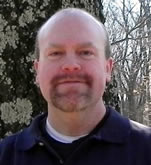Have you ever heard the name Donna Massie? How about Tom McCrum? The former holds the dubious distinction of having identified the very first Asian long-horned beetle (ALB) in Worchester, Mass. Already 1,800 trees have been tagged for removal on 62 square miles surrounding Worcester and four neighboring towns. Tom McCrum is with the Massachusetts Maple Syrup Association and joins economists and politicians in the nightmare scenario that would follow into the tourism and timber industry if the ALB encroached further from its current foothold. Approximately $268 million has been spent on eradication efforts during the last eleven years.
Not to be outdone, at least on the emotional and economical scale, comes Florida's own, revised Boogie Man, Texas Phoenix Palm Decline, TPPD. Not to be confused with it nameless cousin, the as-yet-to-be-identified phytoplasma that can and does kill cabbage and other palms. Imagine Florida without our signature palms. The marketplace has found an answer: inoculations - just like a flu shot. Without needing a pesticide license, training, knowledge, or any type of positive identification, you can get on the bandwagon of treatments and profitability in these crushing economic times. One professional, for whom I have a profound respect, states that, hey, what the heck, he could treat a palm for the same cost as providing a positive disease identification. Never mind that the palm may not have a problem. Let's get the money and go back a few times a year - forever - into perpetuity - yeah, that's capitalism at its best. Another professional recently opined that many, many palms were diseased along one of our heavily traveled interstates. The diagnosis was made from the windshield traveling at 70 mph. Despite cautionary advice from highly respected pathologists who point out that the vector isn't even known yet, and that there are many symptoms that mimic TPPD and the new phytoplasma ("what's-its-name") treatments are being made without diagnosis (can anyone spell n-e-g-l-i-g-e-n-c-e?). It seems to at least not a few that with a transplant mortality rate of anywhere from 10% - 20%, more cabbage palms are killed in moving them than from the new disease. Move over ALB, Florida has TPPD and "what's-its-name".
In other news from the marketplace, this just in: "Your cull oak trees will be ready in 90 days". It seems the poor economy has provided our landscapes with a great by-product - really big trees for a really small price. That would explain why a 4" caliper tree growing in a 30 gallon container is such a great buy for an end user. The poor, unsuspecting customer buys a tree that didn't get stepped-up in the nursery. Problem is the trees are so root bound they either die when irrigation is withdrawn or fall over as noted by a client who paid for and recently lost several hundred at an upscale development. To the grower's defense, his choices aren't good: fire sale them when it's realized they have to be stepped-up into larger containers but there's no money to do it; take a deep breath and spend the money to step them up; take them all to the burn pile; or, an increasingly opted-for alternative - wait until they're root bound, over-sized, then under-sell them. Take home lesson: know your grower or, the alternative, Caveat Emptor - the zeitgeist of our time.
Speaking of root bound plants, this segue is offered: Anyone who missed Dr. Gilman's presentation at the recent Grades and Standards seminar missed out on his most recent insights into root formation in starter containers. More work to follow from the man whose name has become eponymous with roots and pruning.
Finally, why hasn't anyone thought of a "Roots Plus Growers-esque" program for cabbage (and other) palm species? Why can't a cabbage palm be planted with a full canopy (albeit the telephone pole effect will be missed by many) and not go into shock or die? Well, someone has thought of it - and actually done it. Pete Dunnington, certified arborist with John Deere Landscapes.
A very safe and happy Holiday season to you and your families.
As always, the opinions in this article are mine and do not necessarily represent those of others.
Joe Samnik, is an Arborist Certified by the International Society of Arboriculture. Mr. Samnik has over 46 years of practice encompassing tree issues, arboreal and horticultural consulting, dispute resolution, tree and plant appraisals and expert witness in tree and landscape issues.
©Copyright - All Rights Reserved
DO NOT REPRODUCE WITHOUT WRITTEN PERMISSION BY AUTHOR.










